Where’s Empress Market?
KARACHI’S pre-Partition mayors and colonial administration placed most of our beautiful institutional and iconic buildings on the axis of important roads. As a result, these buildings, before pollution obscured them from view, could be seen from a distance, making them an integral part of the cityscape.
Thus Saint Patricks Cathedral and Christ the King Monument are placed at one end of Shahrah-i-Iraq (previously Clark Street) and the high court’s east facade on the other. The west facade of the High Court is on the axis of what is now Shahrah-i-Kamal Ata Turk. Similarly, the Eduljee Dinshaw dispensary lies on the axis of Raja Ghazanfar Ali Road (previously Somerset Street) and is visible all the way from its intersection with Sarwar Shaheed Road (previously Depot Road). Merewether Tower is on the axis of Napier Mole Road and there are many other examples as well.
The founding fathers of Pakistan also followed the same tradition when they chose the location for the mausoleum of the Quaid. They placed it on the axis of what were then Bunder Road and Bunder Road Extension. These roads, following his burial, were renamed after him.
Iconic monuments in Karachi have been hidden from public view.
An elevated Bus Rapid Transit (BRT) had been proposed on M.A Jinnah Road earlier this year. When it was pointed out by a few citizens that the elevated BRT would obscure the view of the mazar from M.A Jinnah Road, the chief minister of Sindh directed that the BRT be brought down to grade thus preserving the sanctity of the mazar, public space and saving, what is perhaps the most important monument in the city, from being hidden from public view.
Among the colonial buildings, Empress Market is undoubtedly the most important, not only for its architecture but also for the fact that various specialised markets within and around it are visited by all classes of citizens, something rare in Karachi.
In addition, it is built on the grounds where freedom fighters against colonial rule were blown up from the mouths of cannons by the British in 1857, while their supporters were hanged or deported to the Andaman Islands (known locally as kala pani) to die of starvation and disease. Many of those who were deported belonged to Chanesar Goth. A low key monument in their memory in the precincts of the market would be in order.
Empress Market lies on the axis of Mir Karam Ali Talpur Road and was visible all the way from Lucky Star, more than two kilometres away from it. However, next to it and bang in the centre of Karam Ali Talpur Road, a huge shed has been built recently to house a food street. The shed has completely hidden the view of the market building from the entire road on whose axis it had so lovingly been placed. The idea of the food street is most welcome but it could have been done easily without hiding an iconic piece of architecture (whose image is often used to represent the city) from public view.
For those who have some aesthetic sensibility, and this includes Saddar shopkeepers and transporters, what has happened to Empress Market is tragic. This and the elevated BRT fiasco on M.A. Jinnah Road, along with so many environmentally unfortunate decisions that Karachi has had to put up with, could have been avoided if the government’s proposals had been shared with the citizens of Karachi.
Given the discussion here, it is important that:
a) the structure erected in front of Empress Market be demolished and the food street be redesigned so as not to hide the market building.
b) a firm decision be taken that in the future no construction will be carried out that hides a heritage building from public view.
c) roads on whose axis heritage or exceptional buildings are located be developed in a manner that enhances the visibility and importance of those buildings.
d) in future, all development plans that are in their conceptual stage be exhibited at a public space with drawings and 3-D images for a period of 30 days for comments by the citizens. A committee of members from civil society, academia, professional institutions and public representatives could then jointly take decisions in the larger interests of the city and its citizens.
To begin with the government could put up for display the physical proposals, along with their images, that have been prepared for the World Bank project for which the government has negotiated an $80 million loan. At a meeting held sometime in mid-2016 with civil society organisations, Bank representatives had promised that they would share all their plans with civil society organisations and with the residents and businesses of the project areas. Not only has there been no sharing, no contact has been established either for that purpose.
- Empress Market
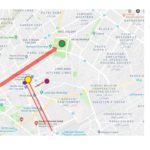



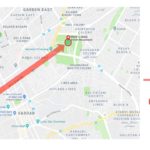

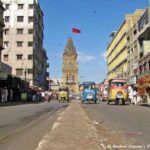
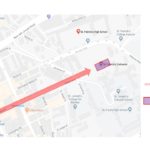
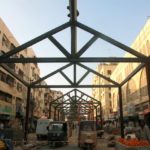

2 Comments
I appreciate your efforts for Karachi and share a historical news with you that The Mayor has take decision to digitally archive and physically preserve the historical heritage of KMC land.
Thanks and regards,
Rao Farid Ahmed
Project Coordinator/Archivist
KMC Land Archiving Project
Thank you for the info.